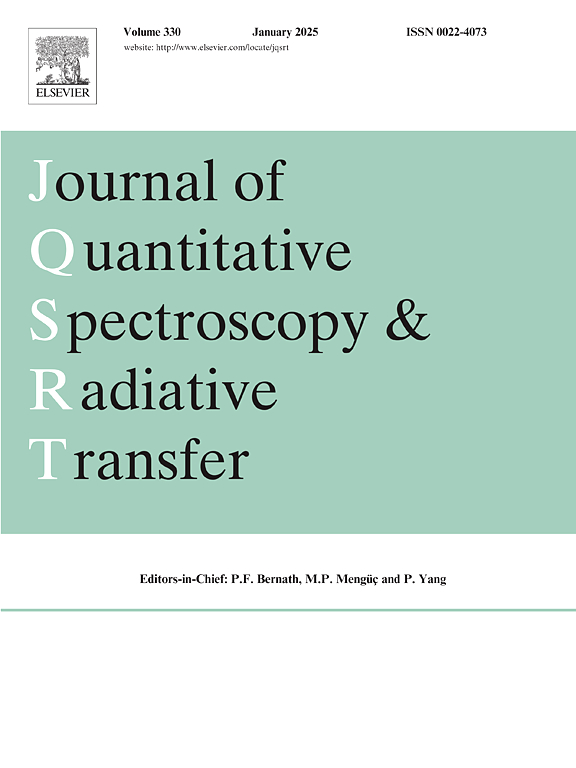Modeling of ice albedo: A quantitative study of the impact of surface roughness
IF 2.3
3区 物理与天体物理
Q2 OPTICS
Journal of Quantitative Spectroscopy & Radiative Transfer
Pub Date : 2025-06-13
DOI:10.1016/j.jqsrt.2025.109543
引用次数: 0
Abstract
The effects of surface roughness on spectral and broadband (spectrally integrated) albedos of sea ice are investigated using a multiple scattering radiative transfer model for the atmosphere-snow/ice system (ARTMASS2). The model accounts for multiple scattering, incorporating Mie theory and geometric optics approximation for single scattering by various components such as snow grains, air bubbles, brine pockets, and cloud droplets across a wavelength range from 0.3 to冰反照率的模拟:表面粗糙度影响的定量研究
利用大气-雪/冰系统的多重散射辐射传输模型(ARTMASS2)研究了表面粗糙度对海冰光谱反照率和宽带反照率的影响。该模型考虑了多重散射,结合米氏理论和几何光学近似来处理雪粒、气泡、盐水袋和云滴等不同成分在0.3 ~ 4.0μm波长范围内的单次散射。为了考虑空气-冰界面的折射率变化,我们引入了冰表面反射模型。考虑到海冰表面的不规则性,我们将表面粗糙度整合到模型中。我们的研究结果表明,海冰表面粗糙度可以显著改变光谱和宽带反照率。特别是对于裸露的海冰,表面粗糙度在反照率变化中起着重要作用。
本文章由计算机程序翻译,如有差异,请以英文原文为准。
求助全文
约1分钟内获得全文
求助全文
来源期刊
CiteScore
5.30
自引率
21.70%
发文量
273
审稿时长
58 days
期刊介绍:
Papers with the following subject areas are suitable for publication in the Journal of Quantitative Spectroscopy and Radiative Transfer:
- Theoretical and experimental aspects of the spectra of atoms, molecules, ions, and plasmas.
- Spectral lineshape studies including models and computational algorithms.
- Atmospheric spectroscopy.
- Theoretical and experimental aspects of light scattering.
- Application of light scattering in particle characterization and remote sensing.
- Application of light scattering in biological sciences and medicine.
- Radiative transfer in absorbing, emitting, and scattering media.
- Radiative transfer in stochastic media.

 求助内容:
求助内容: 应助结果提醒方式:
应助结果提醒方式:


